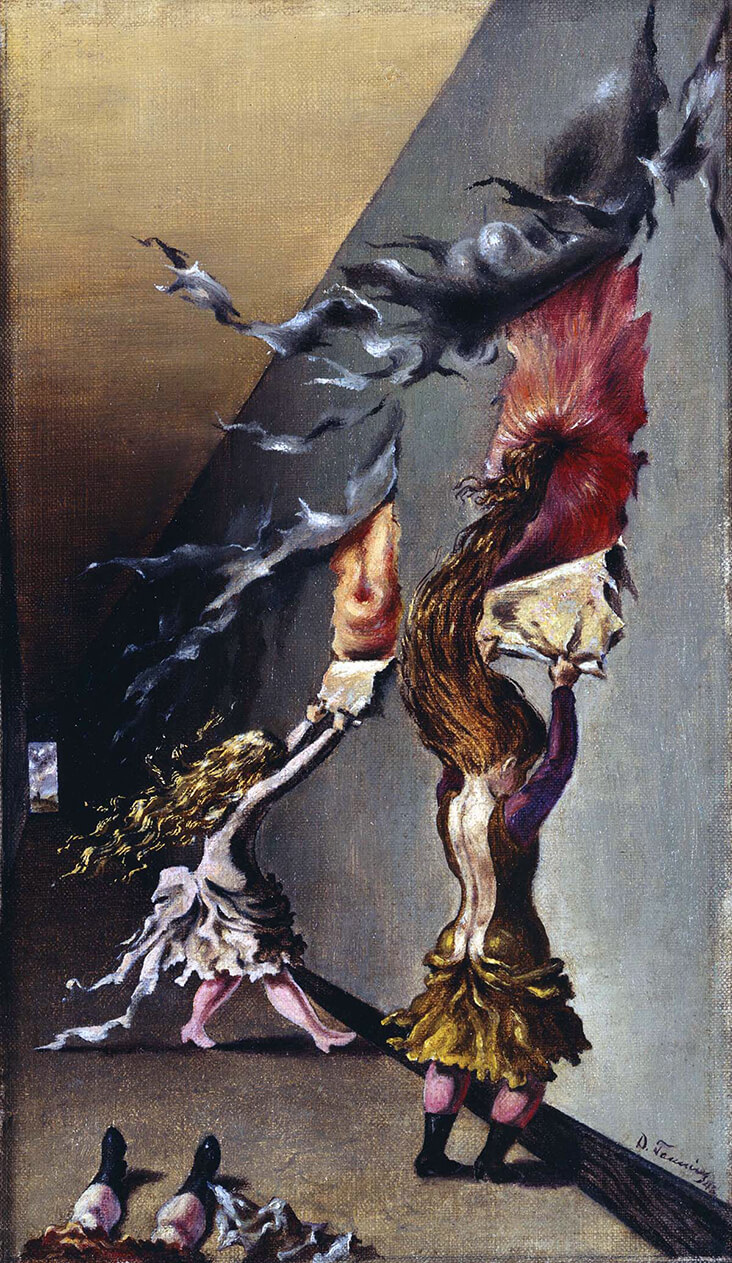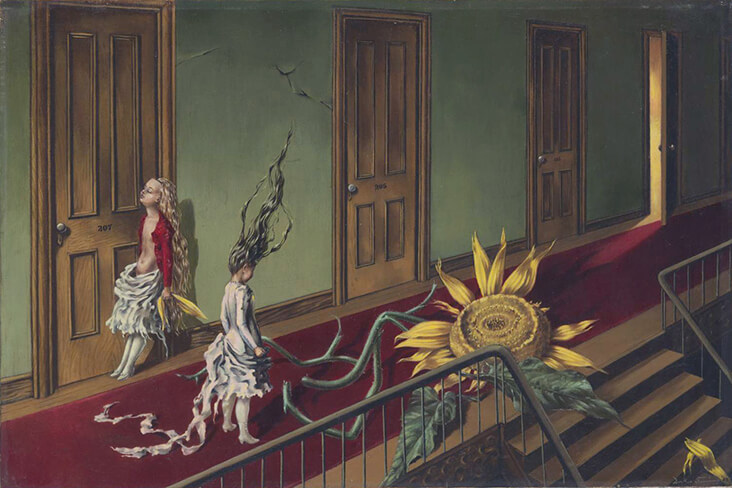FS Colour Series: Tawny Port inspired by Dorothea Tanning’s Pulsating Energy
Blushing crimson reds like that of Tawny Port Linen pulsate across Dorothea Tanning’s fantastical paintings, lending them the passionate turbulence of erotic dreams and nightmares. One of only a handful of female Surrealists to find success in mid-20th century Europe and America, Tanning conjured up brilliantly bizarre scenarios where strange creatures inhabit curious realms beyond our own, filled with mystical, private symbolism and erotic that we can often only guess at. Tanning wrote, “Keep your eye on your inner world.”
One of three sisters, Tanning was born in Galesburg, Illinois in 1910. Her parents had emigrated from Sweden to America some years earlier in hope of finding a new life in the great wilderness of the American prairies, where her father dreamed of becoming a cowboy. But their lives were instead marred with poverty, while Tanning was a bored and listless young girl, complaining in her later memoir, “Galesburg, where nothing happens but the wallpaper.” Like her father, Tanning was a dreamer, finding an escape from boredom through the imaginative literature of Hans Christian Anderson and Lewis Carol. Her first job was a Galesburg Public Library, where she was able to indulge in her greatest passion for reading.
Tanning left Illinois for Chicago in 1928, where she began attending evening art classes and immersing herself in a lively intellectual circle of friends. Brimming with excitement, she wrote in a diary entry, “In Chicago – I meet my first eccentrics … and I feel more and more certain of an exceptional destiny.” Tanning left Chicago for New York in 1935, taking up employment as a freelance advertising designer. It was here in New York just a year later that she first encountered Surrealist art in the exhibition Fantastic Art, Dada and Surrealism at New York’s Museum of Modern Art; she was so taken with this band of European artists that she set about finding a way to integrate herself with them.
The outbreak of the Second World War halted Tanning’s plans to move to Paris, but when Surrealist artists began fleeing war torn Europe for America Tanning began socialising with their lively group, including the artist Max Ernst who she would later marry. In one of her early paintings made during the war, Children’s Games, 1942, the artist makes reference to her uneventful childhood and the boring wallpaper, this time reimagining the scene filled with a strange world of discovery, as wallpaper is pulled away to reveal strangely sensuous hairy, fleshy forms that fall into pools of dark crimson as if suggesting the awakening dawn of puberty.
In the much celebrated Eine Kleine Nachtmusik, 1943, made just a year later, the same shade of wine stained red rolls out across an entire hallway to lend it a regal decadence. A young girl is swept up by forces beyond her control as her hair catches the wind and is cast towards the sky, while a wild sunflower that coils around her seems blown in from the Arizona desert, where Tanning had made an extended visit with her lover Ernst.
Following the end of the war, Tanning married Ernst in 1946 and the pair settled for a longer spell in the Arizona desert, where the wilderness sent Tanning’s imagination into overdrive. The curious Temoins du Drame (Witnesses), 1947 was made during this time, where another domestic scene takes on a haunting quality. Drapes of fabric in pastel toned hues rumple into one another and take on a life of their own, growing hands and feet and swelling into a burst of fleshy crimson as alive as a beating heart on the top left.
Painted in the same year, the more complex Palaestra, 1947, conveys a series of young girls being swept into the air by a gust of wind through an open door. All around them the walls are stained with a tart, berry shade of red, investing the image with blossoming, brimming anticipation.























































Leave a comment